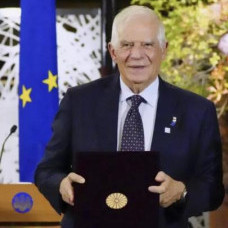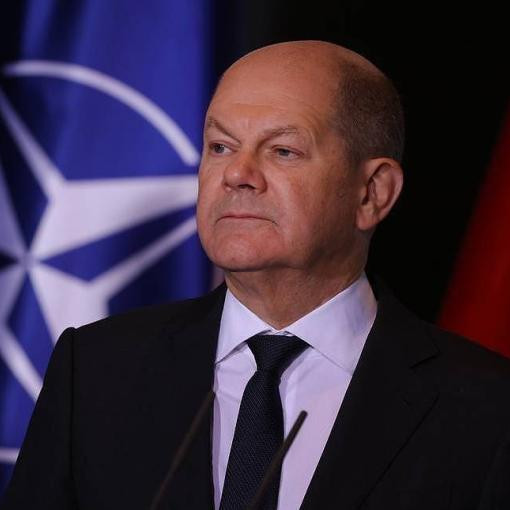"Russia has every opportunity for an adequate response to the deployment of European missile defense by the U.S. We need accurately, on time, with the right quality and at reasonable prices fulfill plans under the State Defense Procurement and Acquisition. If we do that, there will be no particular threat to us," said Vladimir Putin on June 14, at a meeting with militaries of Russia’s 393rd Air Force Base in Krasnodar Territory.
What did the President mean?
As part of the state arms program through 2020 it is supposed to spend 77 billion rubles on the creation of serial production of new missile systems. In addition, it was decided to upgrade the existing missile systems.
A new heavy liquid ballistic missile must replace the Voyevoda RS-20 operational strategic system. In total, such missiles in Russia are 58 pieces, each carrying 10 warheads of 0.55 to 0.75 megatons.
Work on the new missile is given to the design bureau charged named after Makeyev from Miass. The specialists of this firm say that this missile, code-named “Proryv” (Breakthrough) will substantially exceed the RS-20. In particular, it will be able to throw 15 medium or 10 heavy nuclear warheads over a distance of more than 10 thousand kms. At the same time the new missiles will be place in the same mines, now occupied by the thirty-year Voyevodas.
In anticipation of the Proryv, Miass has demonstrated a significantly modernized Sineva (Blue) RSM-54 naval ballistic missile, which has been called “Liner". A successful test launch of this machine was held on 29 September last year. The Blue RSM-54 is considered one of the best in its class by the criterion “launch-weight to throw-weight ratio”: with a weight of 40 tons, it delivers to a distance of more than 11 thousand kms up to 10 nuclear warheads.
According to Makeyev OKB, the Liner missile by its energy and weight perfection excels all modern solid-propellant strategic missiles of the UK, China, Russia, the US and France, and by combat equipment (four blocks of middle power rating) is highly competitive with four blocks (in conditions of the START-3) of the U.S. Trident-2. The Liner can be equipped with a mixed bundling of warheads of various power rating. Thanks to these missile systems, a real opportunity was provided for the existence of a north-western group of submarines under Project 667 BDRM till 2025-2030.
Moscow Institute of Thermal Technology, MIT, where the Bulava, Topol-M and Yars systems were created, solves in its own way the problem of increasing the combat effectiveness of the ground strategic missiles group.
Here we must recall the unsuccessful test launch of the Avangard missile at the end of September 2011 from the Plesetsk cosmodromes. Remarkable were the statements made then by representatives of the Space Forces that confirmed that the launch was conducted by specialists of the MIT and while testing the new combat equipment of the missile was checked. The failure analysis revealed errors, which, of course, are being corrected. All of this allows the experts to suggest that the Vanguard – an evolutionary stage of the Yars system which in 2010 was passed into service by the SRF, but, unlike Yars it carries not 3 but 10 warheads.
Since the efficiency of the already existing (as well as those to be created in the short term) U.S. interceptor missiles in relation to modern Russian intercontinental ballistic missiles (ICBMs) is very low, the natural next step for Russia will be a saturation of missile defense with a large quantity of goals. Including both actual (light multiple warheads of ICBMs), and false ones. In this case, the U.S. missile defense will be just crushed by a large amount of arising targets. And eventually for their suppression an enemy will simply have not enough missiles. Even now, Russia is intensively developing the so-called "light warheads”, whose installation in the ICBMs is possible in a considerable amount.
One of the most important components of the development will be the fact that the Avangard, like Yars will be installed not only on the stationary launch silos, but will also get a mobile version. This will improve the stability of the system.
The survivability enhancement of the Russian strategic nuclear forces presupposes improvements of the cover of the Russian ballistic missiles positions with modern air and missile defense facilities in order to protect against blow primarily with non-nuclear precision-guided munitions. For this it is planned to deploy new S-400 anti-aircraft missile systems, and in the future – to develop the S-500 systems and staff positions active protection systems.
Besides, for several years, an upgrading program (and in fact – of recovery) has been implemented of the Ballistic Missile Early Warning System. This system is designed to minimize the possibility of a surprise attack on the Russian territory. As part of this program the construction is being carried out all around the perimeter of the new Russian radar stations of Voronezh type, which replace the old Soviet, much of which therewith after the collapse of the Soviet Union was outside Russia. Stations of series "Voronezh" in Armavir, Leningrad and Kaliningrad regions have been already brought into action; the construction of the radar began in Krasnoyarsk Territory. In total it is planned to build nine new stations.
The Russian Army is also tasked to develop measures to ensure the destruction of information and control facilities of the missile defense system, command posts and communication facilities. The missile defense information facilities are American satellites that provide the initial detection of missiles at launch and the calculation of the approximate trajectory. Satellites also try to solve the task of target selection. Hence, a countermeasure may be the anti-satellite weapon.
In the field of counter space defense the USSR was among the leaders. Over the last years in Russia, too, works were carried out on different systems of counter space defense, but they were done in strict secrecy. One can only assume that the development of anti-satellite weapon is in multiple directions. This is also the creation of missiles for S-500 type missile defense systems capable to reach close-orbit targets. This is also the development of an air-based laser system based on the basis of the A-60 aircraft, capable of "blinding" satellites. Other, very exotic ways of forcing satellites out of action are likely too. There are reports that Russia is now working on a weapon based on new physical principles.
Radar and other missile defense facilities in Poland can be quickly and reliably hit by the Iskander-M short-range missiles system. Iskanders will be able to shoot through from Kaliningrad almost the whole Poland - their range is estimated at 400-500 km, and a cruise missile from among the system may be able to fly ever farther. Then the Iskanders-E may appear in Byelorussia. By 2020, the Armed Forces of Russia plan to have 120 Iskander-M mobile launchers, which will be equipped with 10 guided missile brigades, including the 152nd guided missile brigade in Kaliningrad region.
These measures were announced on November 23 last year, by the then President Medvedev and included into the state armaments program, for which 20 trillion rubles were allocated (up to 2020).
In general, the task of missile defense components destruction is very difficult; it requires the use of all the Air and Navy Forces. Even special forces will get a job here too. In due time, SWAT teams were preparing to carry out commando-type reconnaissance operations deep in enemy territory. At one time the foreground task was the hunt for mobile launchers of Pershing II intermediate-range missiles in Germany. And now some of the SWAT teams can be targeted at Poland and the Czech Republic. How will the groups be sent deep into the country in the prewar period, at the extreme, is a secret. But secret service man assure that the ways are available.
Some experts consider Russia's withdrawal from the START treaty and the creation of weapons, which are now subject to restrictions, such as restoration of rail-mobile missile systems as a possible response to the expansion of NATO missile defense. The SRF have already included rail-mobile missile systems with the RT-23 UTTH Molodets three-stage solid-propellant missile, which could carry 10 warheads, but they were eliminated under the START-2 treaty, which was never ratified by the U.S. It is unrealistic to resume production of Molodets missiles, since they were manufactured in Ukraine. However, according to former commander of the Kostroma missile division, Major-General Viktor Shmonov, the new rail-mobile missile system can be armed with Topol-M or, better yet, Yars, which carries several warheads. The system was capable, without revealing itself, of overcoming more than 1,000 kms a day and launching rockets from anywhere in the route. The rail-mobile missile systems operation requires large financial expenditures, but the country's security is worth it.
However, many experts still express doubts about the effectiveness of the missile defense system. A racketeer, professor Yuri Chudetsky cite an example of the Soviet Union: "The Americans have built their first missile defense system on the border with Canada knowing that we had deployed our first rocket group where now the Plesetsk space center is - face to the North Pole; this is the shortest way to the U.S. Then we made a rocket launch in a polar orbit through... Southern pole. And that’s all, thereupon their northern missile defense was exhausted.
So, the NATO missile defense can again make a blunder. Only this mistake can cost us dear.










